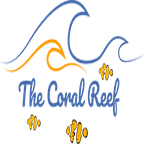Can axolotls help us live longer?

From early witch doctors to modern day longevity scientists, we have sought ways to extend our lives.
One branch of longevity science is researching how we can regenerate various body parts or even reset the epigenome which are chemical “marks” that control whether genes are turned on or off in a cell.
The ability to regenerate a body part is not unique. Star fish and octopi can regrow limbs. Iguanas, skinks, chameleons, geckos and newts can all regrow a tail. Crayfish and lobsters can regrow claws.
But axolotls take regeneration to a whole new level. They can regrow about any part of their body, including non-essential parts of the brain, tail, links, tissues of the eye, heart, central nervous system and their spinal cords. At our hatchery, we saw an axolotl grow a new leg on a damaged leg!
One of the challenges with replacing parts in humans is to avoid our immune systems attacking the new organ or part as an unwanted foreign invader. Axolotls have no problems incorporating transplanted organs or parts from others.
Given these properties, Axolotls are widely used in in the scientific community as a model organism.
The large embryo is easy to manipulate, allowing researchers to observe the full development of a vertebrate.
Axolotls are used in heart defect studies due to the presence of a mutant gene that causes heart failure in embryos.
The axolotl embryos can survive almost to hatching time without heart function, meaning defects are very easy to observe.
The axolotl is used as an ideal animal model for the study of neural tube closure due to the similarities between human and axolotl neural plate and tube formation. The axolotl's neural tube, unlike the frog's, is not hidden under a layer of superficial epithelium.
Mutations affecting multiple organ systems are the subject of past and ongoing studies.
The genetics of the color variants of the axolotl have also been widely studied.
The process of limb generation shows that axolotls have a different system to regulate their internal macrophage level and suppress inflammation, as scarring prevents proper healing and regeneration. Axolotl’s regenerative properties leave the species as the perfect model to study the process of stem cells and its own neoteny feature. The regenerative properties are being studied by tracking cell fates and behaviors, lineage tracing skin triploid cell grafts, pigmentation imaging, electroporation, tissue clearing and lineage tracing from dye labeling. Recent technologies of germline modification and transgenesis are delivering superior live imaging of the regenerative processes that occur for axolotls.
Here are links to various research labs around the world.
Axolotl | Harvard BBS PhD Program
Axolotl Research - (savetheaxolotl.com)
AXOLOTL RESEARCH LAB LLP - Company, directors and contact details | Zauba Corp
Research – The Monaghan Lab (northeastern.edu)
Meet the Axolotl: A Cannibalistic Salamander That Regenerates Its Limbs - News @ Northeastern
A Guide to Keeping Axolotls - by NT Labs
Barna Lab - PI: Maria Barna, Stanford University, Stanford, USA
Beck Lab - PI: Caroline Beck, University of Otago, Otago, New Zealand
Cerny Lab - PI: Robert Cerny, Charles University, Prague, Czechia
Chimal-Monroy Lab - PI: Jesús Chimal Monroy, National Autonomous University of Mexico, Mexico
Cerny lab - PI: Robert Cerny, Charles University, Prague, Czechia
Crawford Lab - PI: Karen Crawford, St. Mary’s college of Maryland, USA
Currie Lab - PI: Joshua Currie, Wake Forest University, North Carolina, USA
Chimal-Monroy Lab - PI: Jesús Chimal Monroy, National Autonomous University of Mexico, Mexico
Crews Lab - PI: Craig Crews, Yale University, New Haven, USA
Cruz-Ramirez Lab - PI: Luis Alfredo Cruz Ramírez, Unidad de Genómica Avanzada, Langebio-Cinvestav, Irapuato, Mexico
Currie Lab - PI: Joshua Currie, Wake Forest University, North Carolina, USA
Delgado Lab - PI: Jean Paul Delgado, Instituto de Biologia, Universidad de Antioquia, Columbia
Del Rio-Tsonis Lab - PI: Katia Del Rio-Tsonis, Miami University, Miami, USA
Echeverri Lab - PI: Karen Echeverri, Marine Biological Laboratory, Woodshole, USA
Fei Lab - PI: Ji-Feng Fei, South China Normal University, Guangzhou, China
Fröbisch Lab - PI: Nadia Fröbisch, Museum für Naturkunde Leibniz-Institut für Evolutions- und Biodiversitätsforschung, Berlin, Germany
Godwin Lab - PI: James Godwin, Mount Desert Island Biological Laboratory, Bar Harbor, USA
Hayashi Lab - PI: Toshinori Hayashi, Hiroshima University, Hiroshima, Japan
Kawano Lab – PI: Sandy Kawano, George Washington University, Washington DC, USA
Kerney Lab - PI: Ryan Kerney, Gettysburg College, Gettysburg, USA
Khurgel Lab - PI: Khurgel Moshe, Bridgewater college, Virgina, USA
Leigh Lab - PI: Nicholas Leigh, Lund University, Lund, Sweden
Maden Lab - PI: Malcolm Maden, University of Florida, Gainesville, USA
Maddin Lab - PI: Hillary Maddin, Carleton University, Ottawa, Canada
Martel Lab - PI: An Martel, University of Ghent, Ghent, Belgium
McCusker Lab - PI: Catherine McCusker, University of Massachusetts, Boston, USA
Monaghan Lab – PI: James Monaghan, Northeastern University, Boston, USA
Murawala Lab - PI: Prayag Murawala, Mount Desert Island Biological Laboratory, Bar Harbor, USA
Öztürk Lab - PI: Gürkan Öztürk, Medipol University, Istanbul, Turkey
Rogers Lab - PI: Crystal Rogers, University of California, Davis, USA
Roy Lab - PI: Stéphane Roy, University of Montreal, Montreal, Canada
Sanchez-Gonzalez Lab - PI: Maria del Rosario Sanchez-Gonzalez, Ludwig-Maximilians-Universität München, Munich, Germany
Sandoval-Guzmán Lab - PI: Tatiana Sandoval-Guzmán, Centre for Regenerative Therapies, Dresden, Germany
Satoh Lab - PI: Akira Satoh, Okayama University, Okayama, Japan
Scott Lab - PI: Edward Scott, University of Florida, Florida, USA
Seifert Lab - PI: Ashley Seifert, University of Kentucky, Lexington, USA
Smith Lab - PI: Jeramiah Smith, University of Kentucky, Lexington, USA
Simon Lab - PI: András Simon, Karolinska institute, Stockholm, Sweden
Soukop Lab - PI: Vladimir Soukup, Charles University in Prague, Czechia
Tanaka Lab - PI: Elly Tanaka, Research - Institute of Molecular Pathology, Vienna, Austria
Tosches Lab - PI: Maria Antonietta Tosches, Columbia University, New York, USA
Whited Lab - PI: Jessica Whited, Harvard University, Boston, USA
Woodhams Lab - PI: Douglas Woodhams, University of Massachusetts, Boston, USA
Yun Lab - PI: Maximina Yun, Centre for Regenerative Therapies, Dresden, Germany
Voss Lab - PI: Stephen Randal Voss, University of Kentucky, Lexington, USA

